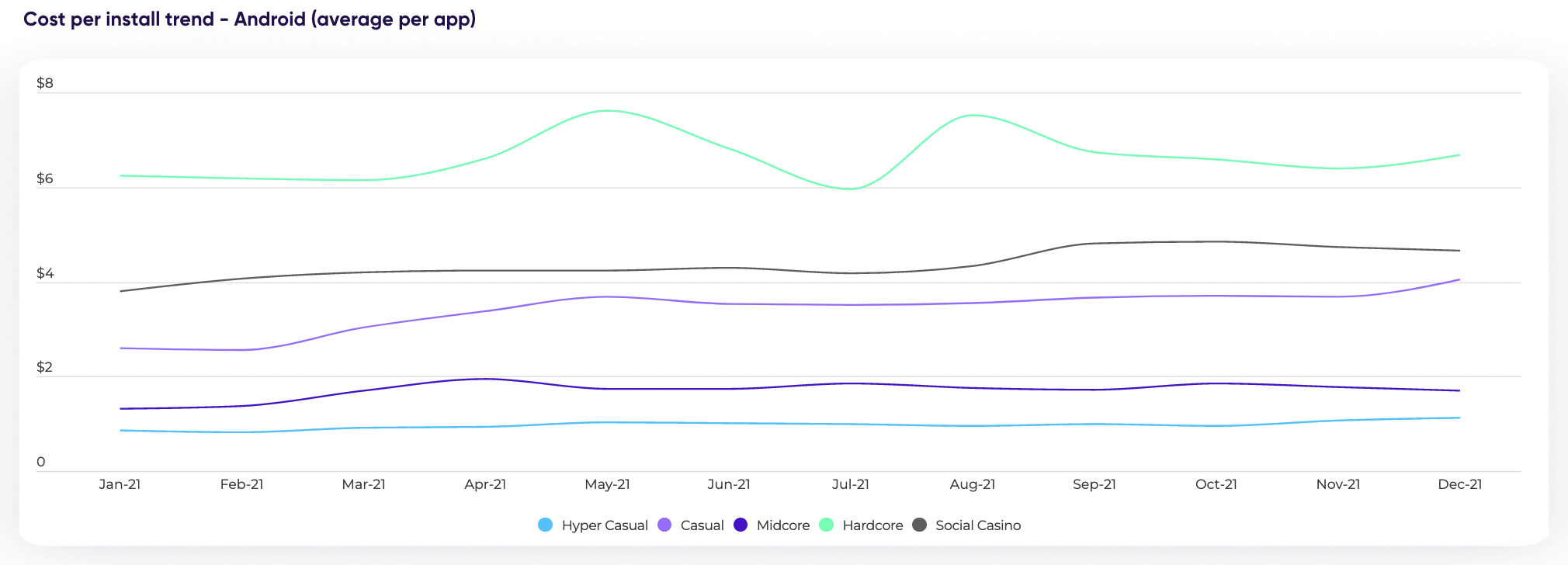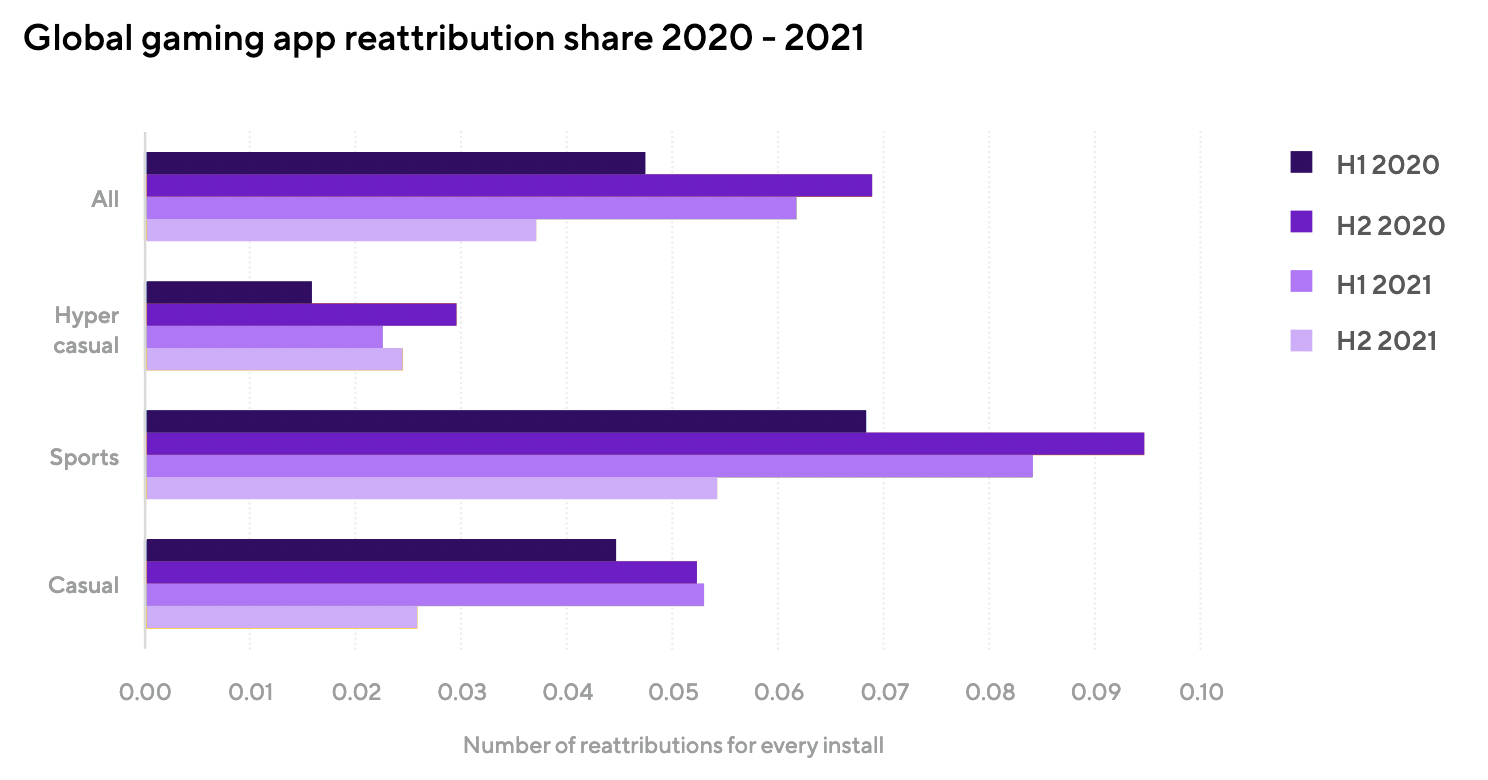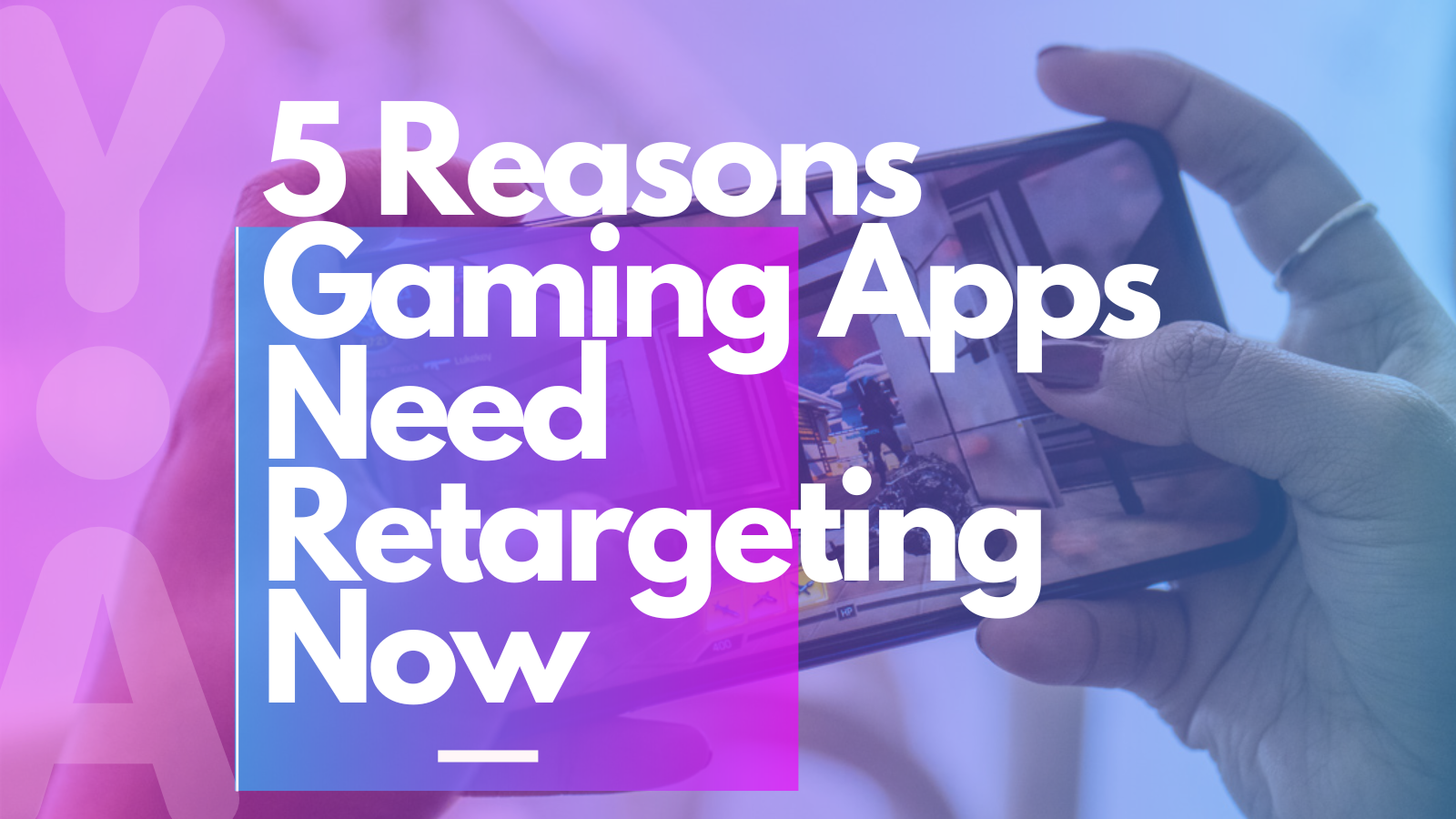The global economy is heading into a time of uncertainty, as supply chain disruptions and the war in Ukraine give way to inflation and slowing economic growth. With advertising budgets tightening, apps — and, especially game apps — face a crucial call-to-action to allocate their ad spend more efficiently, or else face the economic consequences.
As succinctly put by YouAppi’s Founder and CEO, Moshe Vaknin, in a recent LinkedIn article, “Going forward, the apps that make their advertising dollars work harder in the name of good business will thrive.” What makes advertising dollars work harder at no additional cost?
— retargeting your game apps on mobile.
For game apps, specifically, retargeting might be one of the biggest missed opportunities. While ecommerce apps have a retargeting adoption rate of anywhere between 50-72% depending on region, casual games only have a 7% retargeting adoption rate.
Below, we outline five reasons why game apps need to be investing in retargeting in today’s economy.
1. Gaming CPIs are on the rise
The overall cost of acquiring players for game apps is on the rise. According to Adjust, In 2020, the average median gaming app CPI was $1.74. By the close of 2021, that average had increased to $2.18.
According to AppsFlyer, CPIs increased across all game sub-categories over the course of 2021. Casual games saw the largest spike, with CPIs rising from $2.60 to $4.04, a 55% increase.

Source: AppsFlyer
Takeaway
Players are getting more expensive to acquire. This means identifying high-quality, paying players and mobile game retargeting them from Day 1 of install is a key strategy for game apps in 2022 and beyond.
2. Playing sessions are increasing
According to Adjust, total time spent in game apps per player over a 24 hour period grew in 2021. Additionally, total time spent in mobile game apps increased from Day 1 to Day 30 after download.
- Day 1: 50.3 to 53.3 minutes (+3)
- Day 3: 44.9 to 47.2 minutes (+2.3)
- Day 7: 43.3 to 45.5 minutes (+2.2)
- Day 14: 41.7 to 44.2 minutes (+2.5)
- Day 30: 41.4 to 43 minutes (+1.9)
So, while it’s getting more expensive to acquire new players, existing players are playing for longer. Studies show that users who play for longer sessions show a higher rate of in-app purchases.
Takeaway
Mobile gaming session times are increasing and they highlight opportunities to accelerate in-app purchases through re-engagement campaigns.
3. Mobile games are underutilizing retargeting
According to Adjust, overall attributions were low for the gaming vertical in 2021. As game apps have historically underinvested in mobile game retargeting compared to other categories, this data is not surprising. However, it’s worth noting that average game app re-attributions fell even lower last year, from 0.05 to 0.04 re-attributions per install.

Source: Adjust
Takeaway
Given the increase in CPIs, retention is a particularly important growth strategy for game app marketers to be investing in when retargeting game apps on mobile. Especially, given the fact that only 2% of online shoppers convert on their first visit. While mobile game app players stand as a different use case than ecommerce shoppers, the fact remains that a player is less likely to make an in-app game purchase during their first playing session than they are in subsequent sessions.
4. Mobile game players are more likely to come back
The realities of user churn can be disheartening. Almost 80% of users churn the day after they install an app. By Day 7, only 12% of users are still active. Before you panic, keep in mind there’s a growing segment of users that re-engage with apps, even after long periods of inactivity. In fact, an estimated 4% of churned users will come back to an app after a six-month inactive period.
According to Adjust, game apps show a higher rate of returning users than others. While other verticals’ return rates fall more or less in line with the average (4% after six months), the rate of returning churned players is consistently almost double the average. In fact, half a year later 8% of churned players are likely to return, showing a particular pull to this category. Even a year on, an average of 2.3% players will come back to game apps.
Takeaway
The gaming category has a higher than average pull with users. This shows opportunities to invest in mobile game retargeting to enhance retention and LTV. Also according to Adjust, the average time between a user’s last session and uninstall is three days for game apps. That means game apps should start retargeting players pretty much as soon as they acquire them (within the first three days of install); versus waiting the average seven days of inactivity to then initiate retargeting game a — which represents a missed opportunity.
5. Mobile Game Retargeting is more affordable than acquiring new users
Retargeting users via owned media is a much more cost effective marketing strategy than new user growth, especially after iOS 14.5. Its scalability is indicated by its rising popularity. According to AppsFlyer, strategies to re-engage existing users through push notifications, email, and in-app messages jumped 45% on iOS after the IDFA was deprecated. More and more apps are taking advantage of owned media channels and their enhanced measurability, providing marketers with first party data and greater granularity.
Takeaway
Re-engaging users using owned media channels is a key opportunity for game apps to scale their marketing and maximize their access to first party data in the face of economic uncertainty.
In Summary
In conclusion, it’s clear that marketers should be moving more spend to mobile game retargeting campaigns in the current economic climate. Why?
- Gaming CPIs are on the rise. It’s cheaper and more cost effective to re-engage existing users.
- Playing sessions are increasing. The data shows players are spending more time playing mobile games. This shows retargeting is aligned with trends.
- Mobile games are underutilizing retargeting. In comparison to the ecommerce vertical, mobile games are highly under-invested in retargeting. This also means that early adopters of this underutilized strategy are poised to win big.
- Mobile gamers are more likely to come back anyways. Mobile games are stickier than other verticals and players have a higher rate of coming back. Considering this trend, a little investment in mobile game retargeting could go a long way in ramping ROI.
- Retargeting games on mobile is more affordable. Post-iOS 14.5, re-engaging users via owned media channels provides enhanced measurability and is cheaper.
Looking to Retarget your Game App?
Be a mobile gaming trailblazer by getting ahead of the economic trends. Schedule a meeting with our team to start investing in retargeting from Day 1 of your user acquisition campaigns.

